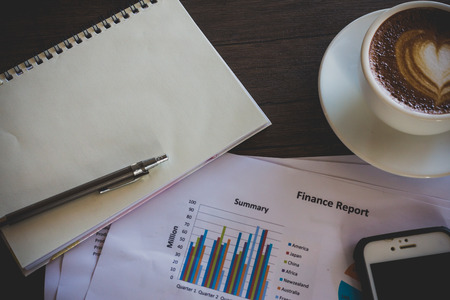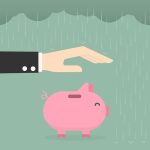1. Choose the Right Budgeting App
Finding the right budgeting app is crucial to managing your finances effectively. With so many options available, it’s important to choose one that aligns with your financial goals, lifestyle, and spending habits. Here’s how you can pick the best budgeting app for your needs.
(1) Identify Your Financial Goals
Before selecting an app, think about what you want to achieve. Are you looking to track daily expenses, save for a big purchase, or manage debt? Different apps cater to different needs, so identifying your goals will help narrow down your choices.
(2) Consider Your Lifestyle and Spending Habits
Your lifestyle plays a big role in determining which budgeting app works best for you. If you have multiple income sources or irregular expenses, you may need an app with advanced tracking features. On the other hand, if you prefer simplicity, a basic expense tracker might be enough.
(3) Compare Features of Popular Budgeting Apps
Not all budgeting apps offer the same features. Some focus on expense tracking, while others provide automated savings tools or debt management assistance. Below is a comparison of common features in popular budgeting apps:
| Feature | Expense Tracking | Automated Savings | Bill Reminders | Investment Tracking |
|---|---|---|---|---|
| You Need a Budget (YNAB) | ✔ | – | ✔ | – |
| Mint | ✔ | – | ✔ | ✔ |
| PocketGuard | ✔ | – | – | – |
| Digi | – | ✔ | – | – |
| Personal Capital | – | – | – | ✔ |
(4) Check Compatibility and Ease of Use
A great budgeting app should be easy to navigate and compatible with your devices. Make sure the app integrates well with your bank accounts and provides a user-friendly interface. Read reviews from other users to get insights into any potential issues.
(5) Evaluate Security and Privacy Features
Your financial data is sensitive, so security should be a top priority. Look for apps that offer encryption, two-factor authentication, and strong privacy policies to protect your personal information.
(6) Try Free Versions Before Committing
If an app offers a free version or trial period, take advantage of it before making a final decision. This allows you to test its features and usability without spending money upfront.
Selecting the right budgeting app is the first step toward better financial management. Once you find one that suits your needs, youll be better equipped to track expenses, save money, and reach your financial goals more effectively.
2. Set Up Your Accounts and Categories
Once youve chosen a budgeting app, the next step is to set up your financial accounts and categorize your income and expenses. This helps you track where your money is going and ensures that your budget is accurate.
Connect Your Bank Accounts and Credit Cards
Most budgeting apps allow you to link your bank accounts, credit cards, and even investment accounts. This makes tracking transactions seamless and automatic. Here’s how you can do it:
(1) Link Your Accounts Securely
Use the app’s secure connection feature to sync your bank accounts and credit cards. This allows real-time transaction updates and helps you stay on top of your spending.
(2) Verify Transactions
After linking your accounts, review the imported transactions to ensure accuracy. Some apps may mislabel expenses, so it’s good practice to check them periodically.
Categorize Your Income and Expenses
Proper categorization is key to understanding where your money is going. Most budgeting apps allow you to customize categories based on your spending habits.
(1) Set Up Income Categories
Classify all sources of income, such as salary, freelance work, or rental income. This helps you understand how much money you have coming in each month.
(2) Organize Expense Categories
Break down your expenses into essential and non-essential categories. Below is an example of how you might categorize your spending:
| Essential Expenses | Non-Essential Expenses |
|---|---|
| Rent/Mortgage | Dining Out |
| Utilities (Electricity, Water) | Streaming Services |
| Groceries | Hobbies & Entertainment |
| Insurance (Health, Car) | Luxury Shopping |
| Savings & Investments | Travel & Vacations |
(3) Adjust Categories as Needed
Your spending habits may change over time, so regularly updating your categories ensures they reflect your actual financial situation.
![]()
3. Create a Realistic Budget
Establishing a budget that aligns with your financial goals while allowing flexibility for unexpected expenses is key to effective money management. A realistic budget helps you stay on track without feeling restricted or overwhelmed.
(1) Assess Your Income and Expenses
Start by listing all your income sources, including your salary, side gigs, and any passive income. Then, categorize your expenses into fixed (rent, utilities, loan payments) and variable (groceries, entertainment, dining out). This will give you a clear picture of where your money goes.
| Category | Examples |
|---|---|
| Fixed Expenses | Rent/Mortgage, Insurance, Loan Payments |
| Variable Expenses | Groceries, Dining Out, Entertainment |
| Savings & Investments | Emergency Fund, Retirement Contributions |
| Discretionary Spending | Shopping, Travel, Hobbies |
(2) Set Spending Limits Based on Priorities
Your budgeting app can help set spending limits for each category. Allocate funds based on necessities first and then assign amounts for discretionary spending. Be realistic—don’t cut too much from categories like food or entertainment if you know you’ll need them.
(3) Plan for Unexpected Expenses
No matter how well you plan, unexpected costs will arise. Allocate a portion of your budget for emergencies so youre not caught off guard when car repairs or medical bills come up. Many budgeting apps allow you to create an “Emergency Fund” category to keep track of these savings.
(4) Adjust and Optimize Regularly
Your budget isnt set in stone. Review it periodically and adjust as needed based on changes in income or expenses. Most budgeting apps provide reports or trends that help you identify areas where you can save more or reallocate funds.
4. Track Your Spending and Adjust
Once youve set up your budgeting app and categorized your expenses, the next crucial step is tracking your spending and making necessary adjustments. Consistently monitoring your transactions helps you stay on top of your finances and avoid overspending.
Why Tracking Your Spending Matters
Keeping an eye on your daily expenses allows you to identify spending patterns and make informed financial decisions. Here’s why it’s important:
- Prevents overspending by showing real-time updates on your budget.
- Helps you recognize unnecessary expenses that can be reduced.
- Makes it easier to adjust your financial goals based on actual spending habits.
How to Monitor Your Transactions Effectively
A budgeting app simplifies the process by automatically categorizing transactions, but you still need to review them regularly. Follow these steps:
(1) Check Your App Daily or Weekly
Set a routine to check your budgeting app frequently. A quick daily review ensures that all transactions are recorded correctly, while a weekly check-in helps you assess trends.
(2) Categorize and Verify Expenses
Sometimes, the app may miscategorize a transaction. Review and correct any errors to ensure accurate data.
(3) Identify Spending Trends
Look at your spending over time to find patterns. Are you consistently overspending in certain categories? Recognizing trends helps you make better financial decisions.
Tweaking Your Budget as Needed
Your initial budget might not always align with reality, so its essential to adjust it as needed. Here’s how:
| Adjustment Type | Description |
|---|---|
| Increase Budget for Essentials | If youre constantly exceeding the budget for necessities like groceries or gas, consider reallocating funds from non-essential categories. |
| Cut Back on Non-Essentials | If you notice excessive spending on dining out or entertainment, set stricter limits to stay within budget. |
| Create a Buffer Category | Add a miscellaneous category for unexpected expenses to prevent your budget from getting derailed. |
Use Alerts and Reports for Better Tracking
Your budgeting app likely has features that can help keep you accountable:
(1) Set Spending Alerts
Enable notifications when youre nearing your budget limit in specific categories.
(2) Review Monthly Reports
An overview of your monthly expenses helps you see where adjustments are needed.
5. Use App Features to Maximize Savings
Budgeting apps come with a variety of features designed to help you save money effortlessly. By leveraging tools like spending alerts, savings goals, and automation, you can make budgeting more efficient and stay on track financially.
Spending Alerts: Stay Aware of Your Expenses
One of the most useful features in budgeting apps is spending alerts. These notifications help you monitor your expenses in real-time and prevent overspending.
(1) Set Custom Spending Limits
Most apps allow you to set a limit for different spending categories like dining out, shopping, or entertainment. Once you reach or exceed the limit, youll get an instant alert.
(2) Get Real-Time Notifications
Enable notifications to receive updates whenever a transaction occurs. This helps in tracking unauthorized charges and staying accountable for your budget.
Savings Goals: Plan for the Future
Using a budgeting app to set specific savings goals can keep you motivated and disciplined in building financial security.
(1) Define Your Savings Targets
Create short-term and long-term savings goals, such as an emergency fund, vacation, or home down payment. Many apps allow you to name your goals and track progress.
(2) Track Progress Visually
Most apps provide visual representations like graphs or percentage trackers, helping you see how close you are to reaching your goal.
Automation Tools: Simplify Your Budgeting Process
Automation tools take the hassle out of managing finances by ensuring that your budget stays on track with minimal effort.
(1) Automatic Transfers
Set up automatic transfers from your checking account to your savings account. This “set-it-and-forget-it” approach ensures consistent saving without manual effort.
(2) Expense Categorization
Your budgeting app can automatically categorize transactions based on spending patterns. This makes it easier to analyze where your money is going.
Comparison of Key Budgeting App Features
| Feature | Description | Benefit |
|---|---|---|
| Spending Alerts | Sends notifications when you reach spending limits | Avoids overspending and keeps you accountable |
| Savings Goals | Allows users to set and track financial targets | Keeps motivation high for saving money |
| Automation Tools | Categorizes expenses and automates transfers | Simplifies budgeting and ensures consistency |
By making full use of these features, you can turn your budgeting app into a powerful tool for managing your finances efficiently. Whether its setting alerts, tracking savings goals, or automating transfers, each feature plays a crucial role in helping you maximize savings effortlessly.


